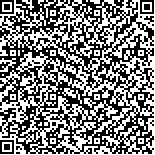| 本文已被:浏览 974次 下载 638次 |

码上扫一扫! |
|
|
| 不同消毒方式对土壤酶活性及土传病原真菌消减的影响 |
|
运翠霞1,2,严昌荣1,2,徐明泽3,刘恩科1,2,MORMILE Pasquale4,董雯怡1,2,刘勤1,2*
|
|
1.中国农业科学院 农业环境与可持续发展研究所, 北京 100081;2.农业农村部农膜污染防控重点实验室, 北京 100081;3.北京市昌平区农业环境监测站, 北京 102200;4.意大利国家科学委员会 应用科学及智慧系统研究所, 意大利 罗马 00185
|
|
| 摘要: |
| 为探究不同消毒方法对土壤环境的影响,本研究以北京昌平连作多年的草莓地为研究对象,通过设置田间试验对比物理防控方法活性炭+太阳辐射膜覆盖与化学熏蒸剂棉隆和氯化苦对土壤温度、养分和酶活性的影响及对土传病原真菌的消减效果。结果表明:高剂量活性炭+太阳辐射膜覆盖可使土壤表层温度迅速升高至50 ℃以上,在0~10 cm土层内对土传病原真菌镰刀菌和疫霉菌的减退率分别达90%和85%以上;活性炭的添加使土壤养分含量显著增加,同时激活土壤酶活性。然而,化学药剂棉隆和氯化苦熏蒸对镰刀菌和疫霉菌的减退率均达95%以上,但同时也降低了土壤养分含量和抑制了土壤酶活性。因此,活性炭+太阳辐射膜覆盖作为一种非化学土壤消毒方法,在改良土壤、连作地土传病原菌的防治具有较大的潜力,为实现连作草莓土传病害的绿色防控提供了新途径。 |
| 关键词: 太阳辐射膜 活性炭 棉隆 氯化苦 酶活性 镰刀菌 疫霉菌 |
| DOI:10.11841/j.issn.1007-4333.2020.12.10 |
| 分类号: |
| 基金项目:中央级科研院所基本科研业务费专项(Y2019LM02-02,BSRF201909);中国农业科学院创新工程(2018-2020) |
|
| Effects of different soil disinfection methods on soil enzyme activities and soil-borne diseases |
|
YUN Cuixia1,2,YAN Changrong1,2,XU Mingze3,LIU Enke1,2,MORMILE Pasquale4,DONG Wenyi1,2,LIU Qin1,2*
|
|
1.Institute of Environment and Sustainable Development in Agriculture, Chinese Academy of Agricultural Sciences, Beijing 100081, China;2.Key Laboratory of Prevention and Control of Residual Pollution in Agricultural Film of Ministry of Agriculture and Rural Affairs, Beijing 100081, China;3.Agricultural Environment Monitoring Station of Changping District, Beijing 102200, China;4.Institute of Applied Sciences and Intelligent System, Italian National Research Council, Roman 00185, Italy
|
| Abstract: |
| In order to explore the impact of different disinfection methods on the soil environment, the strawberry field in Beijing Changping, which has been continuesly cropped for many years was taken as research object. Field experiments were established to investigate the impact of different soil disinfection methods on soil temperature, nutrients, and enzyme activity, and its effect of reducing soil-borne pathogenic fungi. The results showed that: High-dose activated carbon + solarizing film could quickly increase the surface temperature of the soil to above 50 ℃. And the reduction effects on soil borne pathogenic fungi Fusarium spp. and Phytophthora spp. were better, and the reduction rates in the 0~10 cm soil layer were more than 90% and 85%, respectively. At the same time, soil nutrients increased significantly and soil enzyme activity was activated with the addition of activated carbon. Although the chemical fumigants dazomet and chloropicrin fumigation had a good control effect on Fusarium spp. and Phytophthora spp. , the content of soil nutrients and inhibited the activity of soil enzymes were also decreased. Therefore, the non-chemical soil disinfection method, active carbon+solar radiation film mulching, has great potential in improving soil and controlling soil borne pathogens during continuous cropping, which provides a new way for green control of soil borne diseases in continuous cropping fields. |
| Key words: solarizing film dazomet chloropicrin active carbon enzyme activity Fusarium spp. Phytophthora spp. |